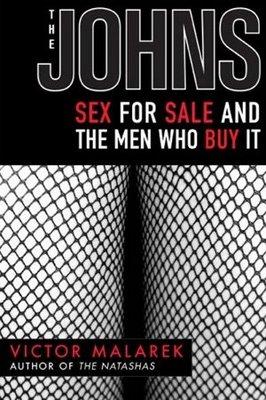The Johns: Sex for Sale and the Men Who Buy It

It’s impossible to study, be in, write about, or fight against _______ (you fill in the blank) sex work, prostitution, and sexual trafficking without getting some or all of it wrong. I’m not the only straight white guy to write about prostituted women, but without always acknowledging my privilege and standpoints reflexively. Like his 2003 book, The Natashas: Inside the New Global Sex Trade, which looked at post-Soviet European bloc countries, Victor Malarek’s new work, The Johns, again demonstrates the ubiquity of sexual commerce and the obvious and banal evils that perpetuate it, but focuses this time on the demand and not the supply side.
Malarek is such a decorated writer, journalist, and television host that a film was made in 1998 about his career. He joins a long list of straight white males such as William Sanger, Geraldo Rivera, Nicholas Kristof, William Vollman, and Chris Hansen in claiming to care about sexual exploitation. Their back-patting is sometimes well deserved, and their usual contempt for heterosexual males involved in sexual commerce who are portly of body, doughy of complexion, and misogynous in their outlook is fully intact here.
And herein lies the irony. In seventeen chapters and 310 pages, johns are shown to be privileged qua heterosexual males, but so is the stealth journalist Malarek as he cruises Costa Rican bars and attends john reeducation camps. Serving up more platitudes and anecdotes than hard data, and more celebrity court cases than sociological insights, Malarek’s database consists of 16 interviews with johns (none explained), consultation of fifty-plus websites (none listed) and thousands of Internet chat room postings (ditto). He capably skewers the exaggeratedly masculine nature of such posters and postings, but that’s too easy. More difficult would be interviewing those long-haul truckers, policemen, clergy and U.N. “peacekeepers,” but that would require an accounting of his own privilege and standpoint.
I enjoyed the breakneck pace of Malarek’s narrative and appreciated that he interviewed so many anti-prostitution activists and researchers about the legalization question. Mentions of famous and infamous johns ranging from Hugh Grant, Hans Christian Anderson, and Eliot Spitzer to Charlie Sheen, Jimmy Swaggart and Clark Gable, and their easy rehabilitations will likely engage lots of non-academic readers. The chapter regarding johns arrested and diverted to First Offender Prostitution Programs started in San Francisco by the recently deceased Norma Hotaling, to whom Malarek dedicated the book, was a high point of the book.
Nevertheless, Malarek’s preference for sweeping generalizations is wearing, and the research he presents and references intratextually could fit on a plate. It flattens even the most obvious differences in prostitution’s many different labor forms and their different psychic costs, health risks, developmental precursors and economic motivators. His flat dismissals of the efforts of sex worker rights organizations rankled me, but the argument he makes for the criminalization only of buying sex and its facilitation is compelling, and I greatly appreciated his discussions of the Swedish, Australian, German and other country-wide experiments with legalization and decriminalization.
The Johns was designed to enable us to connect the dots, but Malarek leaves too many unaccounted for. It’s okay to sneer at the chubby, grubby bar patrons who are molesting pliant, brown-skinned girls and young women, but what if they’re thinking the same thing about him?